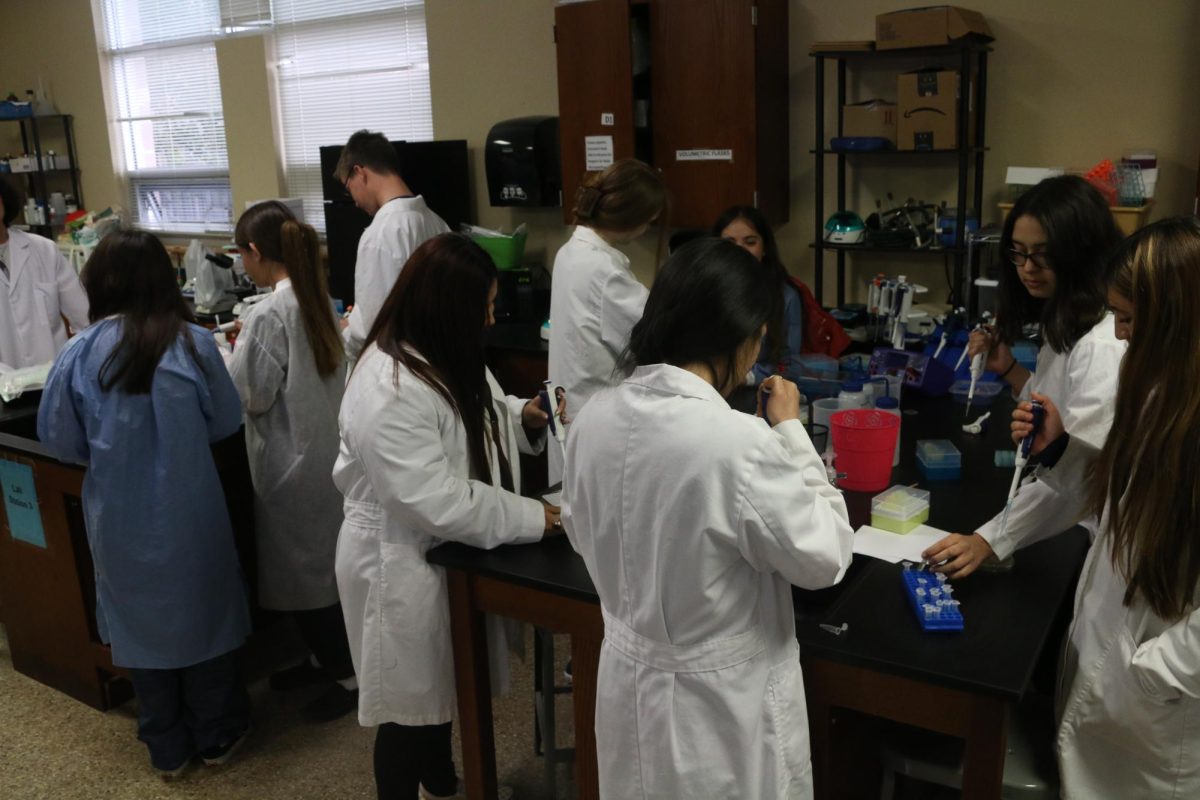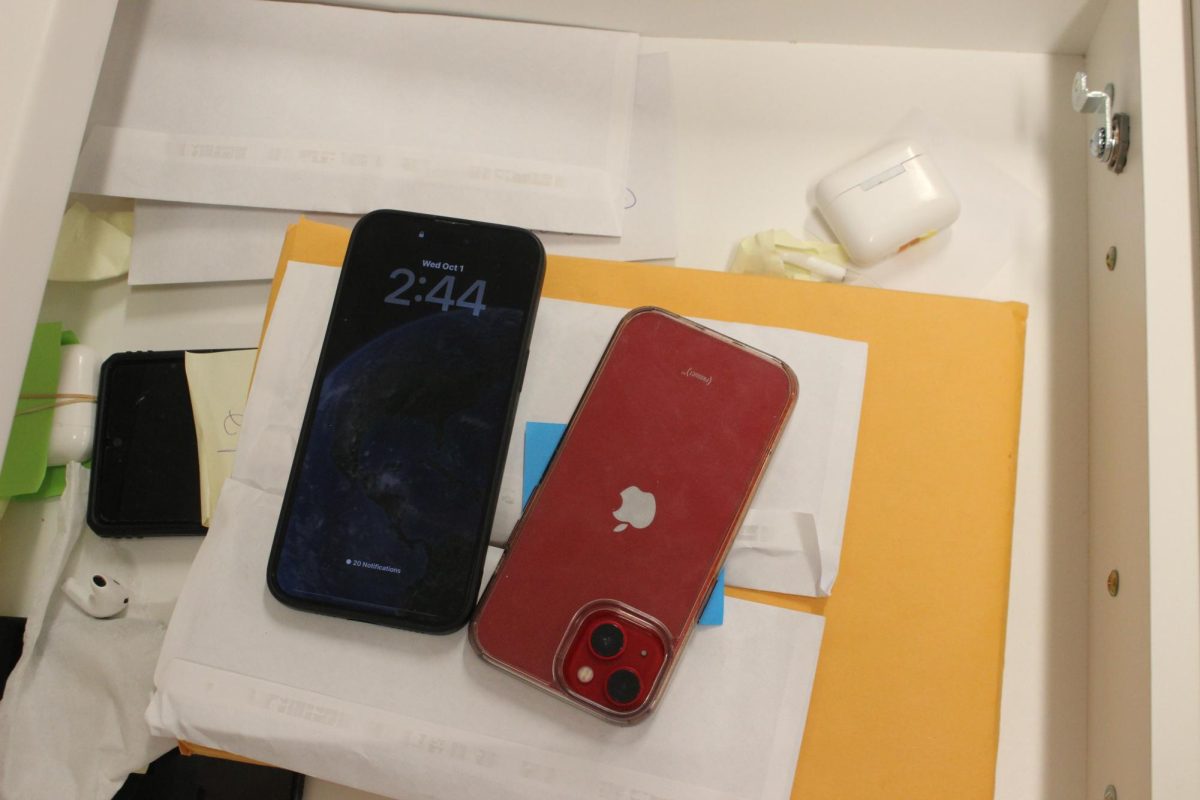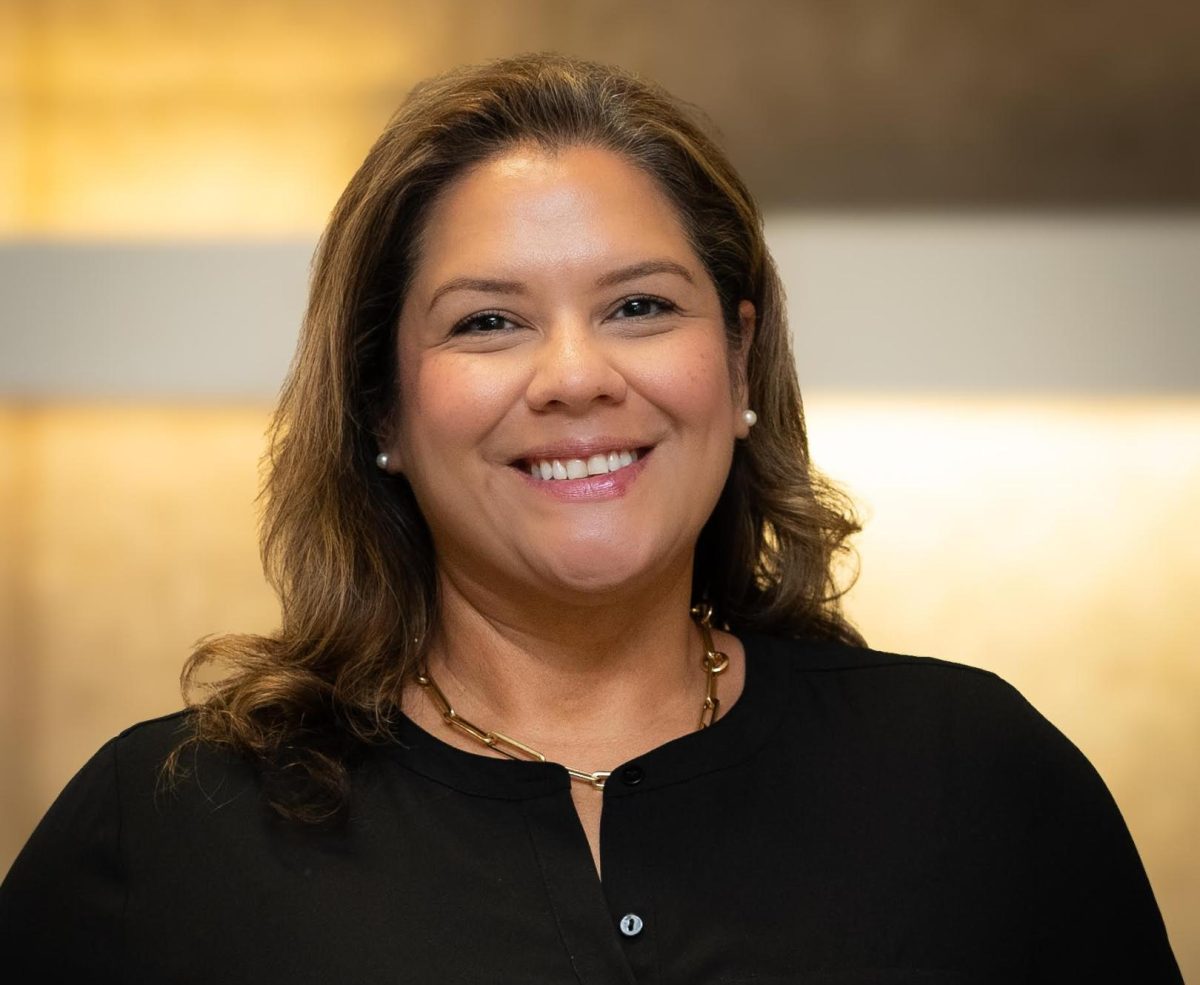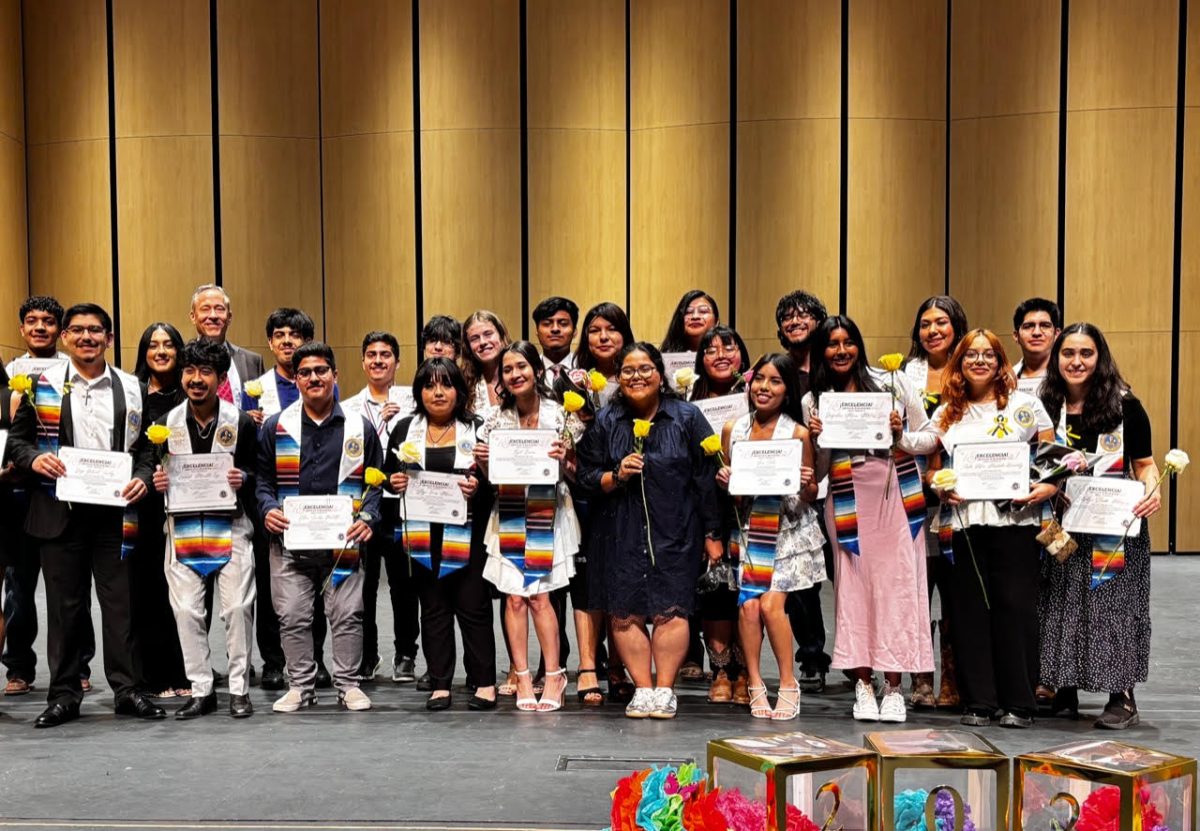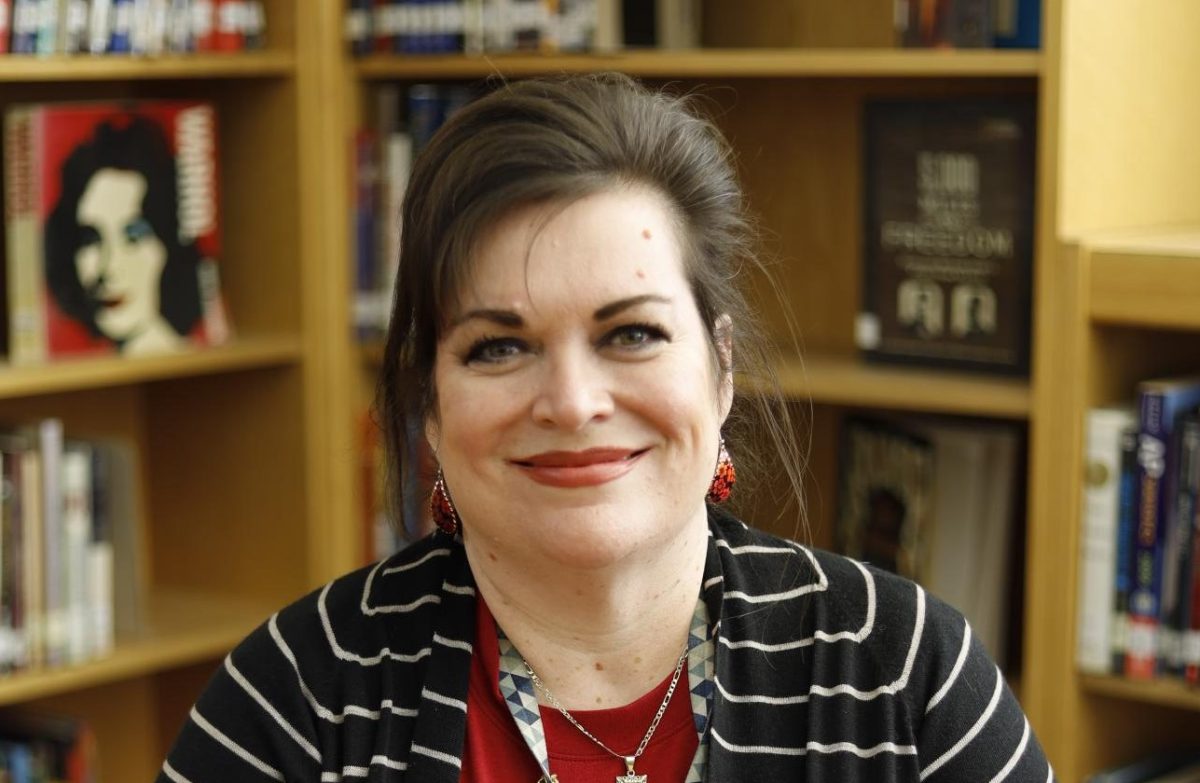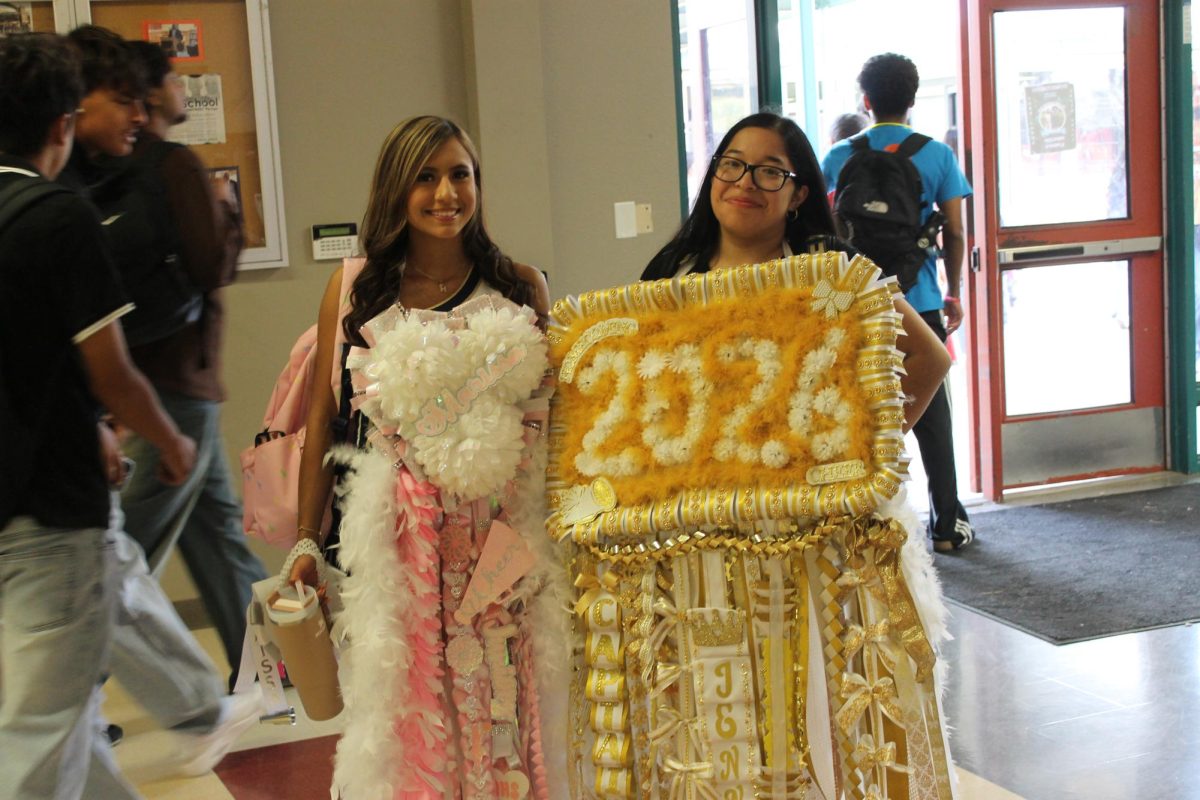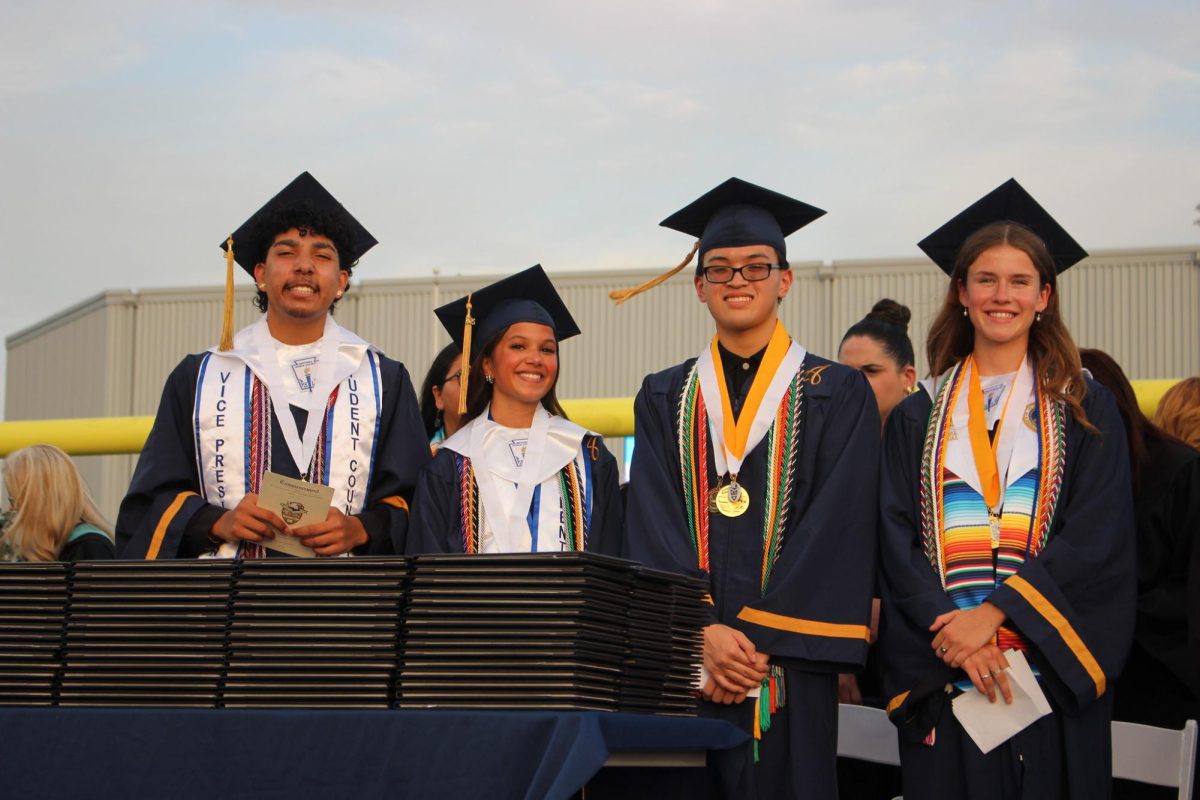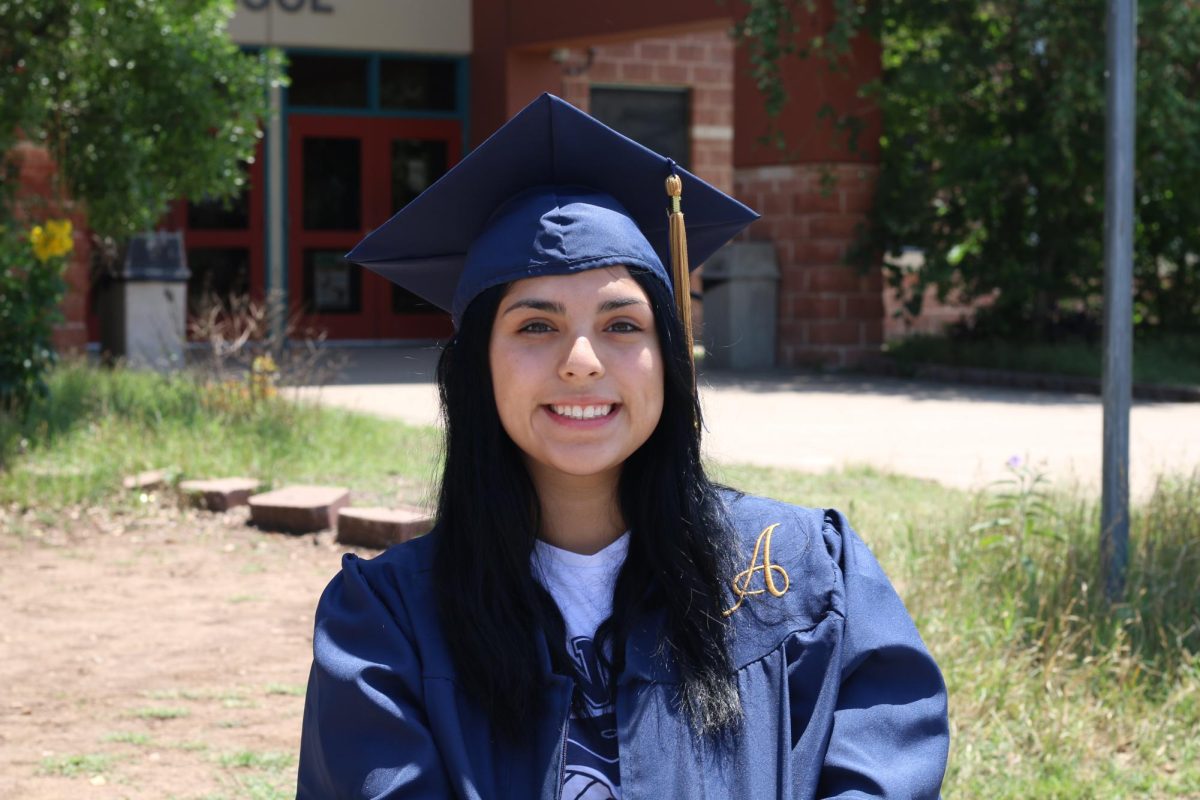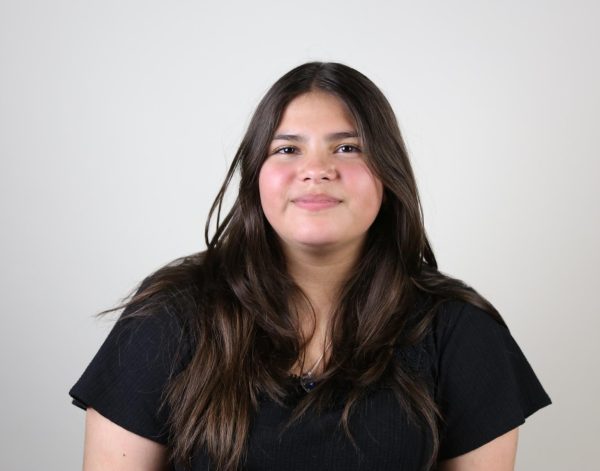About 30,000 people live with cystic fibrosis in the United States, a disease with no cure that often results in a life expectancy of around 40 years.
Cystic fibrosis is a genetic condition that causes severe damage to the lungs, digestive system, and other organs in the body, caused by thick mucus. It often leads to frequent infections and loss of organ functions. While there is still no cure for cystic fibrosis, students in the Akins Biomedical Science program are using state-of-the-art technology called CRISPR to study potential cures for this condition.
Dr. Laura Govea, the CTE biomedical teacher, said using CRISPR exposes her students to the latest technology in biotechnology and genetic engineering.
“It will give them not just the concept but also the lab skills in order to understand the latest technology in the world, how to solve problems zin health science,” she said.
CRISPR, which has only been known as a proven gene editing method since 2013, is the first technology that has provided scientists with a “cut-and-paste” tool that will allow modifications to be made, including removing, introducing, activating, and silencing genes. . Scientists are now exploring ways that CRISPR Cas-9 could be used to fight climate change, build stronger immunity for cattle against viruses and bacteria, and treat or change hereditary disorders and illnesses.
Juniors and seniors in the Akins Biomedical Science program are currently using CRISPR in a classroom project, giving them a unique opportunity to use this cutting-edge technology to edit a target DNA sequence.
On a molecular level, one wrong base in the gene sequence can trigger severe consequences in the human body. The gene that codes for a healthy CFTR gene allows the passage of sodium and water in and out of the cells, but in a cystic fibrosis gene, the proteins obstruct this passage.
Cystic fibrosis affects chromosome 7. This chromosome contains about 1,000 genes used to give instructions on how to make proteins for the body needs to function properly.
CRISPR is also used in other fields of biotechnology, including agriculture to modify crops and livestock. Juniors will be working on CRISPR in corn to improve crop production. At the same time, seniors will work on CRISPR to see how it can affect cystic fibrosis in E. Coli.
Govea said that her students can use this technology because of kits provided to them by the Bill and Melinda Gates Foundation, which seeks to support communities by providing health innovations and educational resources.
“CRISPR is one of the latest genetic engineering techniques used as part of gene therapy,” Govea said. “It’s a very promising technique because it offers easy manipulations of the DNA.”
Before biomedical students could use the CRISPR kits, they had to learn the basic science behind this process. Some of the challenges the project has faced have been the complex lab techniques CRISPR uses. The students and teacher had to undertake a lot of research to understand the steps the project requires.
Seniors Ava Ritchie and Madison Flores said being involved in the CRISPR project has been challenging and exciting to use this advanced technology while still in high school.
“We are doing a lot more complicated stuff,” Flores said.
Ritchie, who wants to study electrical engineering after high school, said the project has been interesting.
“I’ve always been really interested by new medical advancements,” Ritchie said.


